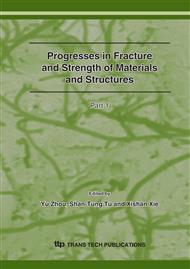p.465
p.469
p.473
p.477
p.481
p.485
p.491
p.495
p.499
Microstructure and Tensile Properties of Oxide Dispersion Strengthened Molybdenum Alloys Prepared by Different Doping Process
Abstract:
The oxide lanthanum dispersion strengthened molybdenum alloys were prepared by proprietary powder metallurgy technology, in which the Mo-La2O3 powders were prepared by liquid-liquid doping process which the oxide lanthanum was added to ammonium bi-molybdate solutions as aqueous solutions of La(NO3)3 and liquid-solid doping process which the oxide lanthanum was added to molybdenum oxide solid particles as aqueous solutions of La(NO3)3, respectively. The microstructure and tensile properties of the molybdenum alloys were investigated at room temperature. The results show that the molybdenum alloys all have fine molybdenum grains, and the molybdenum alloy prepared by liquid-solid doping process mainly contain fine oxide lanthanum particles of submicron and nano-sized while the alloy prepared by liquid-liquid doping process mainly contain nano-sized fine oxide lanthanum particles. The molybdenum alloys prepared by liquid-liquid doping process have higher yield strength and ductility than yield-solid doping process. The results of strengthen mechanism analysis show that the high strength of the molybdenum alloys can be advisablely explained by the fine grain strengthening and particles dispersion strengthening mechanism through the Hall–Petch relationship and Orowan model.
Info:
Periodical:
Pages:
481-484
Citation:
Online since:
September 2007
Authors:
Price:
Сopyright:
© 2007 Trans Tech Publications Ltd. All Rights Reserved
Share:
Citation:


